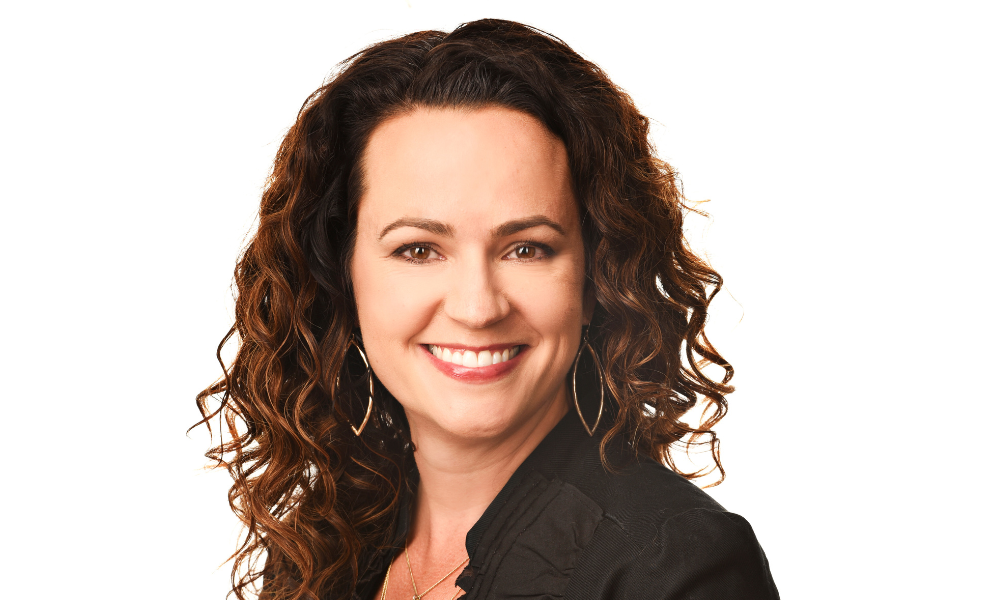Top loan officer points her clients to resources for would-be homeowners

A dream home can easily become a dream deferred in terms of affordability. One top loan originator is helping her clients achieve homeownership by directing them to resources designed to help with down payment assistance in today’s tough market.
“When you buy a home – depending on your loan program – your down payment is going to be anywhere from zero to 5%,” Rebecca Richardson (pictured), a mortgage loan officer at Kind Lending said. “With the price of homes, it can be difficult to come up with all that money plus closing costs if the seller isn’t going to pay them for you.”
Indeed, the average price of a home in the US has been steadily rising – with the rate of affordability depending on the part of the country in which one lives. The median home sales price for a home in the US is $431,000 as of the third quarter of 2023, according to the financial services website Motley Fool. That’s a 31% increase from the beginning of 2020 when the median price was $329,000, according to the outlet.
Housing affordability through the decades
Over the decades, the median price of a home has increased in dramatic fashion as the site illustrates:
- 1980: $63,700
- 1990: $123,900
- 2000: $165,300
- 2010: $222,900
- 2020: $329,000
It’s little wonder why so many have trouble coming up with a down payment. Don’t panic, suggested Richardson – self-described as the “Mortgage Mentor” in her social media branding. She pointed to resources she uses for her clients to help them achieve homeownership.
One is a joint program of Fannie Mae – which sets guidelines for conventional loans – and downpaymentresource.com. “You’re going to answer some questions about where you’re buying, what you’re buying, how much you make, how many people live in your home, those kinds of things,” she explained.
Once the information is input, the site takes the user to tailored results where would-be homeowners are able to learn more about the programs for which they might qualify.
An abundance of programs aim to help would-be homeowners
Fannie Mae also details the abundance of down payment assistance programs on its own dedicated website.
“Low down payment mortgages are a great solution for helping borrowers achieve homeownership,” Fannie Mae officials wrote. “But for some borrowers, finding even a 3% down payment can be a challenge. Fortunately, in many cases, Fannie Mae allows funds for part or all of a down payment and closing costs to come from a variety of sources, helping more borrowers achieve the dream of homeownership.”
For its part, Fannie Mae allows three primary sources of closing cost and down payment assistance:
- Gifts. Fannie Mae allows gifts to come from a variety of sources as a way to help borrowers defray upfront costs. This can come from any individual who’s related to the borrower by blood, marriage, domestic partnership, adoption, or legal guardianship. This also includes relatives (of the borrower or domestic partner), former relatives, godparents, spouses, individuals engaged to marry the borrower, children, or other dependents.
- Grants are another way to help borrowers cover down payment costs, according to the government-sponsored enterprise. These can come from employers, municipalities, states, counties, or state or local HFAs, nonprofit organizations (excluding credit unions), federal agencies, regional Federal Home Loan Banks, Native American tribes and their sovereign instrumentalities, or lenders (under specific conditions).
- Community Seconds mortgages can come from many of the same sources as grants, but a second lien or other document is placed on the property to enforce compliance with it, according to Fannie Mae. Although the GSE does not purchase Community Seconds, it does purchase first mortgages associated with Community Seconds. Among the benefits of community seconds are loans may have more than one Community Seconds mortgage (such as a third lien) up to the maximum 105% CLTV.
Moreover, Community Seconds mortgages can be used with both standard and affordable products. One of those is HomeReady. GSE officials note that sweat equity – labor completed by a borrower prior to closing on a property – is one way to apply the value of volunteer work toward a borrower's down payment for a HomeReady loan.
For borrowers putting in sweat equity to their homes for HomeReady loans, Fannie Mae no longer requires a 3% personal funds contribution nor caps the sweat equity contribution towards a down payment, officials noted.
All told, more than 2,000 programs are available in the US to help with down payment and closing costs, according to the Down Payment Resource website.
Wondering how much down payment on a house you need to secure your home purchase? Read this article to find out.
Want to make your inbox flourish with mortgage-focused news content? Get exclusive interviews, breaking news, industry events in your inbox, and always be the first to know by subscribing to our FREE daily newsletter.



